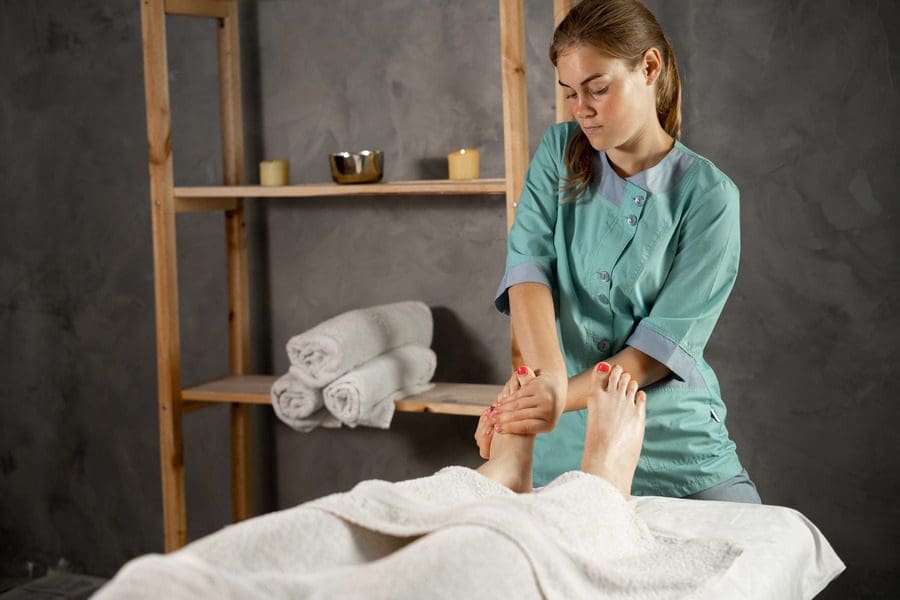Suffering from pain, anxiety, and other conditions can take a toll on the body and mind. Of course, medicinal help can be very important, but alternative remedies such as reflexology may also be beneficial to alleviate some conditions. So, what is reflexology? Can it really help? What should you expect when seeing a reflexologist? Let’s discuss!
What Is Reflexology?
Reflexology is the application of pressure to specific areas of the feet, hands, or ears to alleviate pain and stress in other parts of the body. Professional reflexologists use foot charts that guide them when they need to target specific organs or bodily systems. Sometimes reflexology is used in conjunction with physical therapy, chiropractics, and additional treatments.
Benefits of Reflexology
Reflexologists suggest that the therapy helps reduce stress, increase energy, and improve general well-being. There has also been research showing psychological improvement as an effect of reflexology. Other possible benefits include the following:
- Reducing pain
- Lifting mood
- Boosting the immune system
- Easing arthritis pain
- Treating nerve problems and numbness caused by cancer drugs (peripheral neuropathy)
- Improving digestion
- Clearing up sinuses
More research is still needed to solidify the benefits of reflexology, and if you suffer from serious conditions, it is important to speak with a specialist before trying alternative treatments. Do not stop medical treatment without talking with your doctor first.
What to Expect
At your first appointment, your reflexology therapist will ask a series of questions about your diet, health, lifestyle, allergies, and any conditions and surgeries you’ve had. This questionnaire is to ensure that reflexology is suitable for you. The answers you give will also help the therapist decipher if they need to focus on your feet, hands, ears, or a combination of the three during treatment. This is the best time to bring up any concerns or ask questions you have.
Expect to be in a room with a spa-like atmosphere, low lights, soothing music, and, in some cases, aromatherapy. Depending on what body parts your therapist focuses on, you may sit on a reclining chair or lie on a massage table. Wear something comfortable to the appointment.
Reflexology Appointment
Your reflexologist will likely begin using gentle pressure and oils or creams. They will take note of any allergies you have to make sure not to use anything that will affect you adversely. As the treatment continues, they will apply moderate pressure on one foot, hand, and ear at a time while using different techniques. The session will be anywhere between 30 minutes to an hour long. The reflexologist will advise you if you need further treatment and any aftercare notes they have for you.
Always look for a practitioner certified by the Complementary and Natural Healthcare Council, American Reflexology Certification Board, or another reputable organization.
Have you tried reflexology? Share your experience with us in the comments below!






